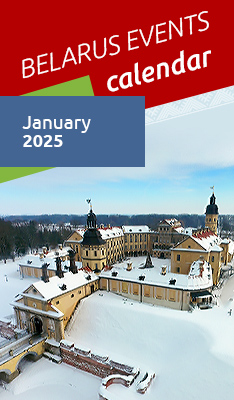Minsk region

Belarusian Autoworks (BelAZ trademark) is leading in the national engineering industry, Zhodino
The Minsk region, one of the six administrative regions (or oblasts) which make up Belarus, lies in the middle of the country and contains Minsk city, the capital of Belarus
The Minsk region of Belarus is one of the most economically developed areas of the country, even though it has no international borders.
1.460,3 million people live in the Minsk region (on 1 January 2024).
Towns and cities in the Minsk region
Minsk city is the capital and main city with a further 24 towns in the region.
Transport links in Minsk
The Minsk region is at the crossroads of several major transport routes, connecting Western Europe with the East, and the Black Sea coast regions with the Baltic Sea states.
The road network is excellent throughout the region with extensive local, national, and international roads.
The railway network, which runs through the region, connects Russia with Europe, and the Baltics with the southern CIS states.
There is an airport in Minsk.
Industry in Minsk
There’s a rich diversity of industry in the Minsk region, including:
-
chemicals
-
light industry
-
machine building (trucks, machine tools)
-
construction materials (concrete)
-
electronics
-
furniture
Industrial activity in the region centres around five towns:
-
Soligorsk
-
Borisov
-
Zhodino
-
Slutsk
-
Molodechno
There is a free economic zone in Minsk.
Natural resources in Minsk
The Minsk region is rich in a wide range of natural resources and minerals, including:
-
potassium and rock salts
-
building materials
-
peat
-
slate coal
-
chalk
-
iron ore
Agriculture in Minsk
Agriculture is varied and well-established in the Minsk region.
Cattle and pig farming are significant industries and there are also large poultry farms in the region.
The main crops are potatoes, flax and sugar beet, and there are also a number of horticultural farms around the major cities
Culture and sport in Minsk
The Minsk region’s many cultural attractions include 2 major theatres and 17 museums.
Sport is also important in the Minsk region, which has 2638 sports facilities and a number of specialist sports schools.
Places to visit in the Minsk region
The many buildings and monuments of historical and cultural interest in the Minsk region include:
-
churches in Borisov (18th century)
-
archaeological and architectural sites, Logoisk (19th century)
-
Zaslavl castle (16th and 17th centuries)
-
churches in Vileyka (15th and 19th centuries)
-
Budslav Bernadine monastery (1783)
-
Svir church (1909)
-
Volozhin Palace (19th century)
-
Ivenets Franciscan monastery (1606)
-
Y. Radziwill country estate in the village of Krasnaya Zvezda, Kletsk (18th century)
-
Slutsk church (18th century)
The Dudutki Museum of 19th-century Life is a popular tourist attraction in the region.








 print version
print version make home page
make home page add to bookmarks
add to bookmarks










